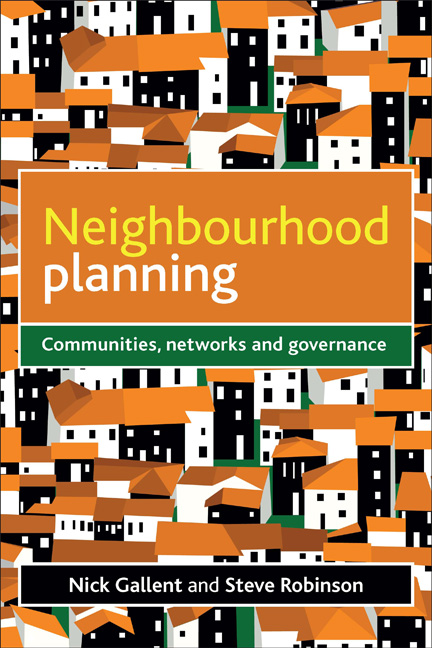Book contents
- Frontmatter
- Dedication
- Contents
- List of figures, images and table
- Abbreviations
- Acknowledgements
- Authors’ note
- Part One Democracy, planning and localism
- Part Two Capacity building and community-based planning
- Part Three The interface with policy actors
- Part Four Neighbourhood planning, leadership and democratic renewal
- References
- Index
ten - Working with local government
Published online by Cambridge University Press: 07 September 2022
- Frontmatter
- Dedication
- Contents
- List of figures, images and table
- Abbreviations
- Acknowledgements
- Authors’ note
- Part One Democracy, planning and localism
- Part Two Capacity building and community-based planning
- Part Three The interface with policy actors
- Part Four Neighbourhood planning, leadership and democratic renewal
- References
- Index
Summary
In this chapter and the next, the focus is placed on communication between parish councils, policy actors, service providers and other bodies external to the communities. Reflecting the distinction drawn between bonding and bridging tactics, this analysis has been divided into two chapters. The current chapter considers direct links to the local authority, predicated on a lobbying relationship, with parish councils seeing themselves as part of the hierarchy of local government. The next then looks at a broader range of bridged links through intermediaries, including the support groups introduced in Chapter Seven, the area’s LSP and more incidental intermediaries including ward members. The distinction between direct and bridged links is not easy to make. It is sometimes not clear whether a bridge was intended or accidental: parish groups, for example, may have dealings with housing officers regarding a specific development site, but these officers may then bring crucial information (on community feeling) to planning colleagues, potentially influencing policies or decisions. In such instances, there may have been no intention to bridge, but a strong link to housing resulted in an effective, bridged, forward connection. In general, the distinction drawn here is this: lobbying tends to be the object of a direct link, predicated on the belief that pressure can be exerted to change a decision; in contrast, placing (usually of evidence) is the object of an indirect link, performed in the belief that an intermediary can help transmit this evidence (perhaps a community-based plan), in a translated and useable form, to a decision taker.
To maintain confidentiality, parish groups are referred to using the notation introduced in Chapter Seven. The policy actors, however, are named unless there is a good reason for not doing so.
Lobbying links to the local authority
The majority of parish groups had what they judged to be ‘strong ties’ into Ashford Borough Council, usually through named officers who had either a parish liaison role or became known to the community during a local project: housing and development control officers had often built up relationships with parishes during and following planning applications. The few parishes who thought that their ties were weak tended to have little direct contact with officers, leaving their ward member to ‘represent their interests’.
- Type
- Chapter
- Information
- Neighbourhood PlanningCommunities, Networks and Governance, pp. 123 - 136Publisher: Bristol University PressPrint publication year: 2012



